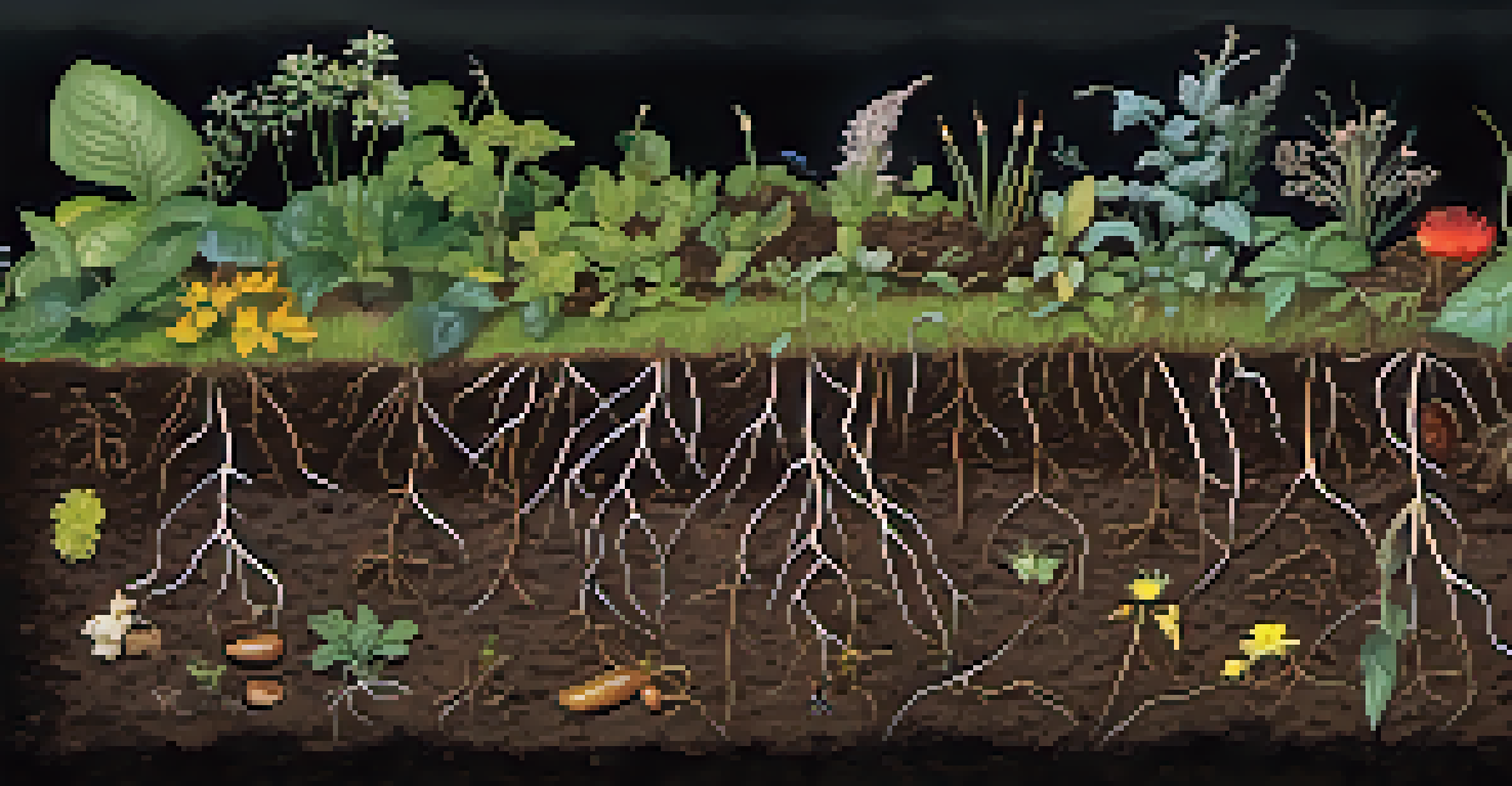The Impact of Climate Change on Wild Plant Populations

Understanding Climate Change and Its Effects on Ecosystems
Climate change refers to long-term alterations in temperature and weather patterns, primarily caused by human activities like burning fossil fuels. These changes affect ecosystems worldwide, disrupting the delicate balance that supports biodiversity. Wild plant populations, in particular, are vulnerable to these shifts as they rely on specific climatic conditions to thrive.
The environment is where we all meet; where we all have a mutual interest; it is the one thing all of us share.
As temperatures rise and precipitation patterns change, many plants struggle to adapt. For instance, species that have evolved in stable environments may find it difficult to cope with increased heat or drought. This can lead to decreased growth rates, lower reproductive success, and ultimately, a decline in population numbers.
Moreover, climate change can create opportunities for invasive species to flourish, further threatening native plants. When native plants are unable to compete with these newcomers, the entire ecosystem suffers, highlighting the interconnectedness of climate, plants, and overall ecological health.
Shifts in Plant Distribution Due to Climate Change
As temperatures rise, many wild plant species are shifting their ranges toward cooler areas, such as higher altitudes or latitudes. This migration can disrupt existing ecosystems, as new plant communities form and compete with local species. For example, alpine plants are being pushed higher into the mountains, where their habitat becomes increasingly limited.

However, not all plants can move quickly enough to keep pace with changing conditions. Species with limited dispersal abilities, such as those that rely on specific pollinators or soil conditions, may face severe challenges. This can lead to localized extinctions, further diminishing biodiversity in affected areas.
Climate Change Disrupts Ecosystems
Long-term shifts in temperature and weather patterns threaten biodiversity by impacting plant populations and creating opportunities for invasive species.
Additionally, these shifts can impact relationships within ecosystems, such as those between plants and their pollinators or herbivores. As plants move, their associated species may not follow, leading to mismatches that can destabilize entire ecological networks.
Altered Growth Cycles and Phenology of Wild Plants
Phenology refers to the timing of life cycle events in plants, such as flowering and fruiting. Climate change is causing these events to occur earlier in the year due to warmer temperatures. This shift can create mismatches between plants and the organisms that depend on them, such as pollinators that may not be active when flowers bloom.
In nature’s economy, the currency is not money, it is life.
For example, if a flower blooms earlier than its pollinator emerges, the plant may not get pollinated, resulting in lower seed production. This can affect not only the individual plant but also the broader community of species relying on that plant for food and habitat.
Changes in phenology can also impact plant competition, as species that adapt to the new timing may outcompete those that cannot. As a result, some species may thrive while others decline, leading to changes in plant community composition and ecosystem functioning.
The Role of Soil Health in Supporting Plant Populations
Soil health is crucial for plant growth, providing essential nutrients and water. Climate change threatens soil health through increased erosion, nutrient depletion, and changes in microbial communities. Healthy soil supports diverse plant populations, and when it deteriorates, the plants that depend on it suffer.
For instance, intense rainfall can lead to soil erosion, washing away necessary nutrients and creating less hospitable environments for plants. Additionally, extreme weather events can disrupt the microbial life in the soil that plays a key role in nutrient cycling.
Plant Distribution is Shifting
As temperatures rise, many wild plant species are migrating to cooler areas, leading to potential localized extinctions and disrupted relationships within ecosystems.
As soil health declines, plants may struggle to establish and grow, leading to decreased biodiversity. This highlights the importance of soil conservation practices, especially in the face of climate change, to support resilient wild plant populations.
Impacts of Extreme Weather Events on Plant Survival
Extreme weather events, such as droughts, floods, and hurricanes, have become more frequent due to climate change. These events can devastate wild plant populations, either directly through physical damage or indirectly by altering their habitats. For example, drought can lead to water stress, making it difficult for plants to survive.
Flooding, on the other hand, can drown plants or wash away seeds, disrupting regeneration processes. Species that are less resilient to these shocks may face significant declines, while those that can adapt might emerge as dominant species, altering the landscape.
The aftermath of these events can have cascading effects on ecosystems, impacting everything from soil composition to animal behavior. As plant populations decline, the entire food web can be affected, emphasizing the need to understand and mitigate these impacts.
Conservation Strategies for Protecting Wild Plants
In light of the challenges posed by climate change, effective conservation strategies are essential for protecting wild plant populations. This includes habitat restoration efforts, which can help to create more resilient ecosystems that can better withstand climate impacts. By restoring degraded habitats, we can support both plant diversity and the wildlife that depends on these ecosystems.
Additionally, establishing protected areas can safeguard critical habitats from further degradation. These areas allow for the preservation of native species and the maintenance of ecological processes, providing a refuge for plants threatened by climate change.
Extreme Weather Threatens Plants
Increased frequency of extreme weather events, such as droughts and floods, can devastate wild plant populations and disrupt entire ecological networks.
Public awareness and engagement are also crucial in conservation efforts. By educating communities about the importance of wild plants and the threats they face, we can foster a collective commitment to protect these vital resources for future generations.
The Importance of Research and Monitoring in Conservation
Research plays a vital role in understanding how climate change affects wild plant populations. By studying plant responses to changing conditions, scientists can identify vulnerable species and develop targeted conservation strategies. This knowledge is crucial for adapting management practices to better support plant resilience.
Monitoring plant populations over time helps track changes and assess the effectiveness of conservation efforts. This data can inform decision-making, helping to create adaptive management strategies that evolve alongside changing environmental conditions.

Collaboration between researchers, conservationists, and policymakers is essential for effective action. By sharing knowledge and resources, we can create a more comprehensive approach to protecting wild plant populations from the impacts of climate change.